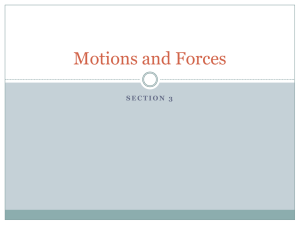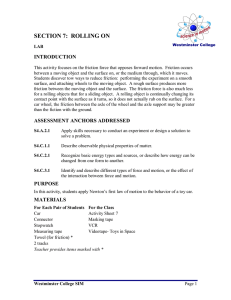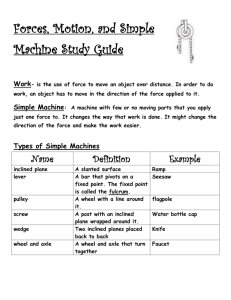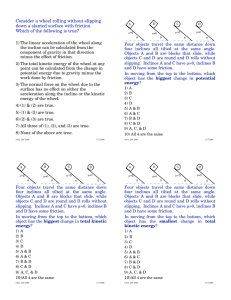Suppose that the weights are moved a closer angular acceleration
advertisement
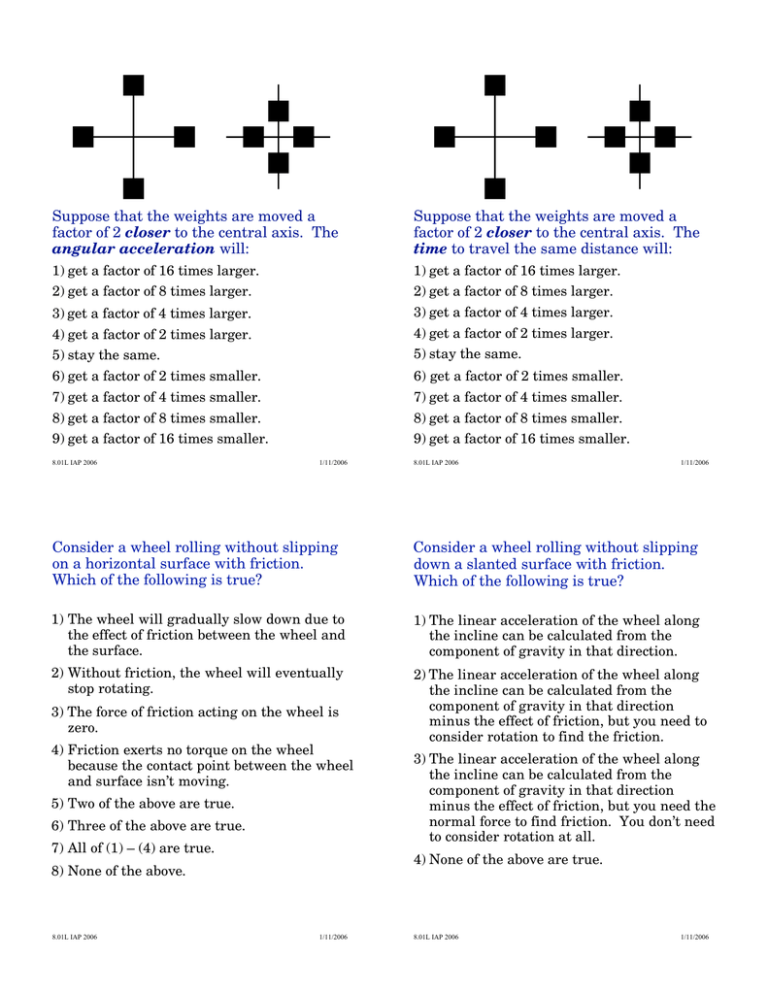
Suppose that the weights are moved a factor of 2 closer to the central axis. The angular acceleration will: Suppose that the weights are moved a factor of 2 closer to the central axis. The time to travel the same distance will: 1) get a factor of 16 times larger. 1) get a factor of 16 times larger. 2) get a factor of 8 times larger. 2) get a factor of 8 times larger. 3) get a factor of 4 times larger. 3) get a factor of 4 times larger. 4) get a factor of 2 times larger. 4) get a factor of 2 times larger. 5) stay the same. 5) stay the same. 6) get a factor of 2 times smaller. 6) get a factor of 2 times smaller. 7) get a factor of 4 times smaller. 7) get a factor of 4 times smaller. 8) get a factor of 8 times smaller. 8) get a factor of 8 times smaller. 9) get a factor of 16 times smaller. 9) get a factor of 16 times smaller. 8.01L IAP 2006 1/11/2006 8.01L IAP 2006 1/11/2006 Consider a wheel rolling without slipping on a horizontal surface with friction. Which of the following is true? Consider a wheel rolling without slipping down a slanted surface with friction. Which of the following is true? 1) The wheel will gradually slow down due to the effect of friction between the wheel and the surface. 1) The linear acceleration of the wheel along the incline can be calculated from the component of gravity in that direction. 2) Without friction, the wheel will eventually stop rotating. 2) The linear acceleration of the wheel along the incline can be calculated from the component of gravity in that direction minus the effect of friction, but you need to consider rotation to find the friction. 3) The force of friction acting on the wheel is zero. 4) Friction exerts no torque on the wheel because the contact point between the wheel and surface isn’t moving. 5) Two of the above are true. 6) Three of the above are true. 7) All of (1) – (4) are true. 4) None of the above are true. 8) None of the above. 8.01L IAP 2006 3) The linear acceleration of the wheel along the incline can be calculated from the component of gravity in that direction minus the effect of friction, but you need the normal force to find friction. You don’t need to consider rotation at all. 1/11/2006 8.01L IAP 2006 1/11/2006
